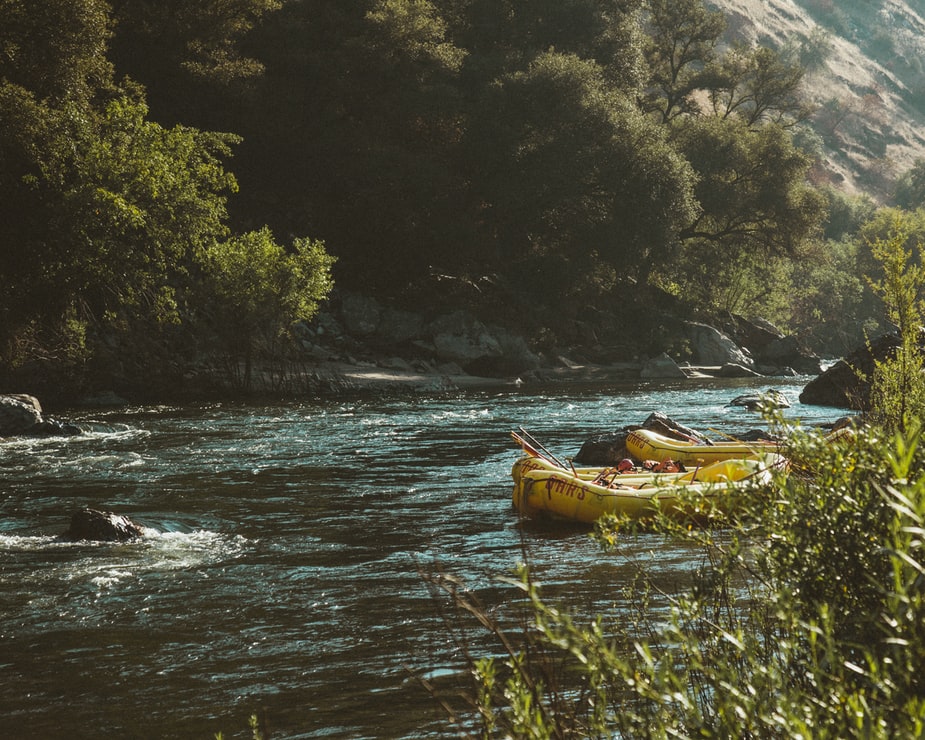Whitewater Rafting History and Terms You Need to Know to be a Pro

Taking your first whitewater rafting trip? Congratulations on discovering on of the most popular outdoors sports in the United States and around the world! In this brief article we will trace a little bit of rafting history as well as teach you some terms and techniques that will help you sound like a pro.
History
It is generally agreed that Lieutenant John Fremont of the United States Army is the ‘grandfather’ of whitewater rafting. In 1842 he wrote a journal which described his rafting expedition on the Platte River in Nebraska. By the 1960s, whitewater rafting had become a sport enjoyed by many and a number of ‘routes’ were mapped out, including some through the majestic Grand Canyon. The 1970s saw whitewater rafting become more recognized as a competitive sport when it was included in the Olympic Games in Munich, after which a number of independent rafting companies sprang up in regions from Scotland to South America to Africa. The 1990s saw whitewater rafting being included in a number of competitive events around the world. These included the Barcelona Olympic Games in 1992 and the XXVI Olympiad in Atlanta in 1996, which showcased the whitewater rafting competition hosted by the Ocoee River in Tennessee Valley.
The 1996 Summer Olympics created the Ocoee Whitewater Center, which exists to this day. It is located near Ducktown, Tennessee and was used for the slalom races in the XXVI Olympiad. For this purpose, a 1,640 foot section of the Upper Ocoee River was constricted and drops, eddies and slalom gates were created for the slalom course. Today, the course is no longer used for slalom racing but rather for recreational use. The river is naturally quite dry during most of the year, so the Center, which is now operated by the U.S. Forest Service, feeds it with water on summer weekends. For 34 days a year the course is open for use by private boaters and guided rafting groups.
Whitewater rafting in the 21st century has truly ‘come of age.’ It is not only a very popular recreational and competitive sport around the world, it has also become a ‘world of its own’ in regards to techniques, strategies and tricks used in the sport and the associated jargon to go along with it. Sounding like a pro is of course one step closer to being a pro.
Jargon
Put In: This refers to the point at which the rafts are launched into the river. Typically, this is where the whitewater rafting guide will give a talk to dole out safety guidelines and paddling instructions.
Take Out: This is the end of the adventure, where the rafts are taken out of the water. Here is also where the group often sets up camp and tells adventure stories over a fire and a barbeque.
Braii: The word is a South African term for barbeque. Goodies often include copious amounts of meat and vegetables like squash, potatoes and cabbage.
Chilly Bin: This is the New Zealand term for a cooler used to keep food and drinks icy over an extended trip.
Pelicase: A pelicase is a plastic box, which varies in size, used to keep items dry during the trip, such as first aid kits, cameras and iPods.
Flip: Describes when the raft tips over to an upside-down position. The guide on the raft carries ‘fliplines’ to assist in righting the raft and getting everybody back onboard. Don’t forget to yell “rope” if you’re the one throwing it out!
Short swimmer: This refers to a person that falls off the raft but is able to hold onto the OS Line (Outside Line) — a safety rope which runs tightly around the outside of the raft.
Long swimmer: This is someone who falls off the raft and ends up further away. They can be assisted with a throw bag or a paddle to get them back into the raft. If you’re the long swimmer, don’t forget to keep your feet up and in front of you- don’t ever try to stand up!
Eddy: Describes water that is moving back upstream because of a rock or obstacle. This is often a good place to stop the raft
Conclusion
With the history and jargon provided above you’re sure to be off to having a fun, safe, and adventurous rafting experience soon with your family. Get ready to learn, get wet, and trust your guide as you have a great time!

















